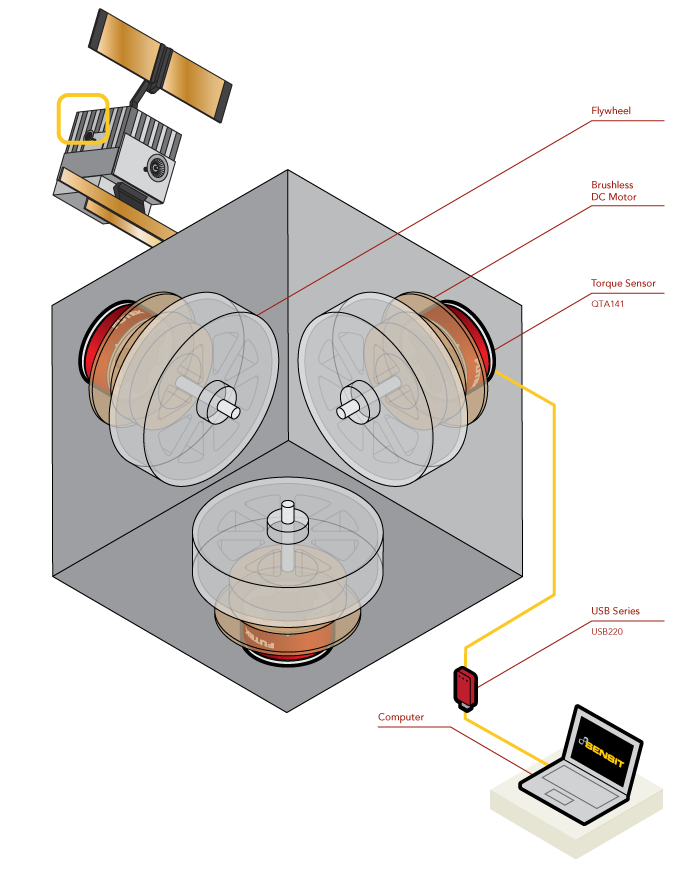 |
|
Application 317
Satellite Reaction Wheel Torque
Application Summary
One of the more efficient means of satellite attitude control is using reaction wheels. Reaction wheels scale easily making them excellent candidates for attitude control systems in a CubeSat. They create small torque changes necessary to keep a communication antenna pointing at earth or a telescope pointing at a star. By utilizing a micro torque sensor, the response time and torque output of the motor/flywheel can be measured, allowing for precision control loop gains to be established for the PID balancing functions used to stabilize the spacecraft.
Products in Use
FUTEK’s QTA141 Micro Reaction Torque Sensor paired with the USB220 High Resolution USB Solution. |
 |
|
How it Works
|









